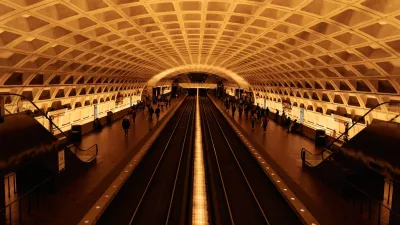The prospect of a high speed rail line connecting California's major cities has been appealing to many in the state. But with less than a quarter of the money needed for the project, the risks are hard to ignore.
"For California, the lure of its new ride -- a bullet train system capable of whisking passengers between the Bay Area and Los Angeles -- has proved so enticing that the state jumped at the deal, even though it has only a quarter of the money needed.
That's leading some critics to ask whether the state's largest project ever could also prove to be its most financially disastrous.
California is less than two years from the planned start of construction on the nation's first high-speed rail line, which would open in 2020. The trains will zip along the Caltrain corridor from San Francisco to San Jose and then on to Anaheim, a three-hour journey end to end."
How the state will make up the rest of the three-quarters of the costs is still uncertain, and some say the project is doomed to fester in debt for decades. But others remain hopeful that the money will come through, and that the line will be an economic success.
FULL STORY: Who will pay for California's high-speed rail system?

Study: Maui’s Plan to Convert Vacation Rentals to Long-Term Housing Could Cause Nearly $1 Billion Economic Loss
The plan would reduce visitor accommodation by 25,% resulting in 1,900 jobs lost.

North Texas Transit Leaders Tout Benefits of TOD for Growing Region
At a summit focused on transit-oriented development, policymakers discussed how North Texas’ expanded light rail system can serve as a tool for economic growth.

Why Should We Subsidize Public Transportation?
Many public transit agencies face financial stress due to rising costs, declining fare revenue, and declining subsidies. Transit advocates must provide a strong business case for increasing public transit funding.

How to Make US Trains Faster
Changes to boarding platforms and a switch to electric trains could improve U.S. passenger rail service without the added cost of high-speed rail.

Columbia’s Revitalized ‘Loop’ Is a Hub for Local Entrepreneurs
A focus on small businesses is helping a commercial corridor in Columbia, Missouri thrive.

Invasive Insect Threatens Minnesota’s Ash Forests
The Emerald Ash Borer is a rapidly spreading invasive pest threatening Minnesota’s ash trees, and homeowners are encouraged to plant diverse replacement species, avoid moving ash firewood, and monitor for signs of infestation.
Urban Design for Planners 1: Software Tools
This six-course series explores essential urban design concepts using open source software and equips planners with the tools they need to participate fully in the urban design process.
Planning for Universal Design
Learn the tools for implementing Universal Design in planning regulations.
Ascent Environmental
Borough of Carlisle
Institute for Housing and Urban Development Studies (IHS)
City of Grandview
Harvard GSD Executive Education
Toledo-Lucas County Plan Commissions
Salt Lake City
NYU Wagner Graduate School of Public Service




























